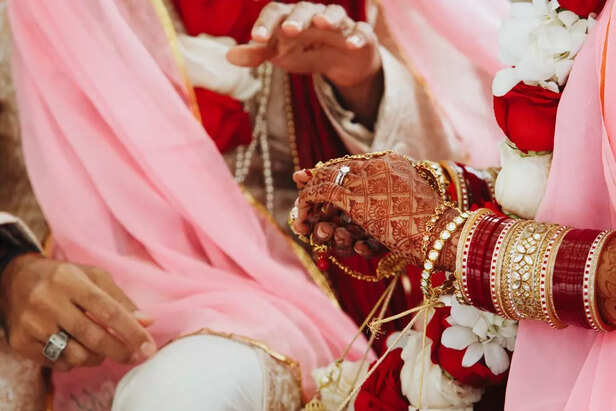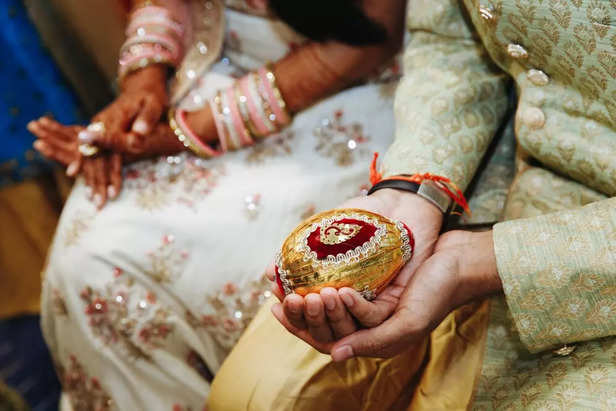Arranged Marriage 2.0: Why It’s Not the Same as Your Parents’ Era
Nidhi | Dec 24, 2024, 23:22 IST
Arrange marraige
Arranged marriages in India have significantly evolved over the years. Once solely based on family obligations and societal roles, today's arranged marriage system emphasizes compatibility, personal choice, and mutual understanding. Couples now have the opportunity to explore their potential relationship, often spending months together and even considering live-in relationships before making a commitment. This article explores the transformation of arranged marriages from the traditional approach to the modern, personalized marriage process that blends cultural values with contemporary expectations.
In the heart of India, where tradition and modernity often coexist in vibrant harmony, the concept of marriage has undergone a profound transformation. While the word arranged marriage might still evoke images of two strangers meeting for the first time, exchanging vows in a ceremony designed by their families, today’s arranged marriages are far from the blind unions of the past. Once driven by societal expectations and family obligations, marriage has evolved into a more personal journey, shaped by individual compatibility, shared values, and mutual understanding. What was once considered a mere formal arrangement has blossomed into a collaborative process where both families and individuals actively engage in ensuring a future filled with love, respect, and partnership. Let’s delve deeper into how the dynamic of arranged marriages has shifted from your parents’ era to a modern-day phenomenon that embraces both tradition and personal choice.

In earlier generations, arranged marriages in India were primarily a societal obligation. Families, often with the help of matchmakers or relatives, decided on a suitable partner based on caste, religion, financial stability, and family reputation. Couples often didn’t meet—or even see—each other before their wedding day. Marriage was seen as a social contract, with the primary objective being the unification of two families rather than two individuals.
For instance, stories from the mid-20th century often highlight how brides and grooms would meet for the first time during the wedding ceremony itself, relying on family members to vouch for the other’s character. Love, compatibility, and personal preferences took a backseat, as the marriage was seen as a duty to society and family rather than a personal journey.

Marriage, in its essence, has always been a sacred union. In Hinduism, it is considered a samskara (sacrament), an eternal bond (panigrahana) where two souls unite not just for one lifetime but across several. Marriage rituals emphasize mutual respect, shared responsibilities, and spiritual growth, symbolized by the seven sacred steps (saptapadi).
Other cultures also emphasize the sanctity of marriage. In Christianity, marriage is described as a covenant, a sacred promise between two individuals and God. Islam views marriage as a nikah, a solemn contract binding two individuals in love, respect, and mutual care. Across these traditions, marriage has historically been seen as more than a mere social arrangement—it’s a partnership for life.

Fast forward to the present, and arranged marriages are no longer about blind trust in family decisions. The process has become more collaborative, where both individuals and families play active roles. Here's how arranged marriages have evolved:
Modern arranged marriages emphasize compatibility—emotional, intellectual, and lifestyle alignment. Couples are encouraged to meet multiple times, discuss their values, and assess long-term compatibility. Factors like shared career goals, financial planning, and personal ambitions are now prioritized.
Unlike the swift timelines of the past, many modern couples take months to make a decision. From meeting at coffee shops to going on vacations with family approval, they spend quality time together, understanding each other’s personalities, quirks, and aspirations.

In a significant shift from traditional norms, some arranged setups now include live-in relationships. While still controversial in some parts of India, this practice allows couples to test their compatibility in a real-world setting before committing.

Technology has revolutionized arranged marriages, with matchmaking platforms like Shaadi.com and Jeevansathi.com enabling individuals to filter potential matches based on education, career, and interests. Video calls and online interactions have become common first steps in the process, especially post-pandemic.
While families still play an essential role, their involvement is now more advisory. Today’s couples value independence in decision-making, ensuring they enter marriage with informed consent rather than familial pressure.

Arranged marriages in India have transformed into a balanced blend of tradition and individuality. This evolution reflects a broader societal shift towards valuing personal happiness and compatibility over rigid adherence to norms. The process is no longer about two strangers fulfilling a societal role; it’s about two individuals embarking on a shared journey with mutual understanding and respect.
As arranged marriages continue to adapt to the needs of a modern generation, they stand as a testament to India’s ability to honor tradition while embracing change. This blend of old and new ensures that marriage remains not just a societal institution but a meaningful partnership built on shared values and mutual respect.
The Traditional Role of Arranged Marriages

Marraiges
In earlier generations, arranged marriages in India were primarily a societal obligation. Families, often with the help of matchmakers or relatives, decided on a suitable partner based on caste, religion, financial stability, and family reputation. Couples often didn’t meet—or even see—each other before their wedding day. Marriage was seen as a social contract, with the primary objective being the unification of two families rather than two individuals.
For instance, stories from the mid-20th century often highlight how brides and grooms would meet for the first time during the wedding ceremony itself, relying on family members to vouch for the other’s character. Love, compatibility, and personal preferences took a backseat, as the marriage was seen as a duty to society and family rather than a personal journey.
The Essence of Marriage Across Cultures

Cultural wedding
Marriage, in its essence, has always been a sacred union. In Hinduism, it is considered a samskara (sacrament), an eternal bond (panigrahana) where two souls unite not just for one lifetime but across several. Marriage rituals emphasize mutual respect, shared responsibilities, and spiritual growth, symbolized by the seven sacred steps (saptapadi).
Other cultures also emphasize the sanctity of marriage. In Christianity, marriage is described as a covenant, a sacred promise between two individuals and God. Islam views marriage as a nikah, a solemn contract binding two individuals in love, respect, and mutual care. Across these traditions, marriage has historically been seen as more than a mere social arrangement—it’s a partnership for life.
Arranged Marriage Today: An Evolved Approach

Compatibility
Fast forward to the present, and arranged marriages are no longer about blind trust in family decisions. The process has become more collaborative, where both individuals and families play active roles. Here's how arranged marriages have evolved:
1. Compatibility Takes Center Stage
2. Extended Courtship Periods
3. Live-in Relationships Before Marriage

Live-in Relationship
In a significant shift from traditional norms, some arranged setups now include live-in relationships. While still controversial in some parts of India, this practice allows couples to test their compatibility in a real-world setting before committing.
4. Technology’s Role in Matchmaking

Dating
Technology has revolutionized arranged marriages, with matchmaking platforms like Shaadi.com and Jeevansathi.com enabling individuals to filter potential matches based on education, career, and interests. Video calls and online interactions have become common first steps in the process, especially post-pandemic.
5. Families as Guides, Not Decision-Makers
The Shift in Perspective

Wedding
Arranged marriages in India have transformed into a balanced blend of tradition and individuality. This evolution reflects a broader societal shift towards valuing personal happiness and compatibility over rigid adherence to norms. The process is no longer about two strangers fulfilling a societal role; it’s about two individuals embarking on a shared journey with mutual understanding and respect.
As arranged marriages continue to adapt to the needs of a modern generation, they stand as a testament to India’s ability to honor tradition while embracing change. This blend of old and new ensures that marriage remains not just a societal institution but a meaningful partnership built on shared values and mutual respect.
